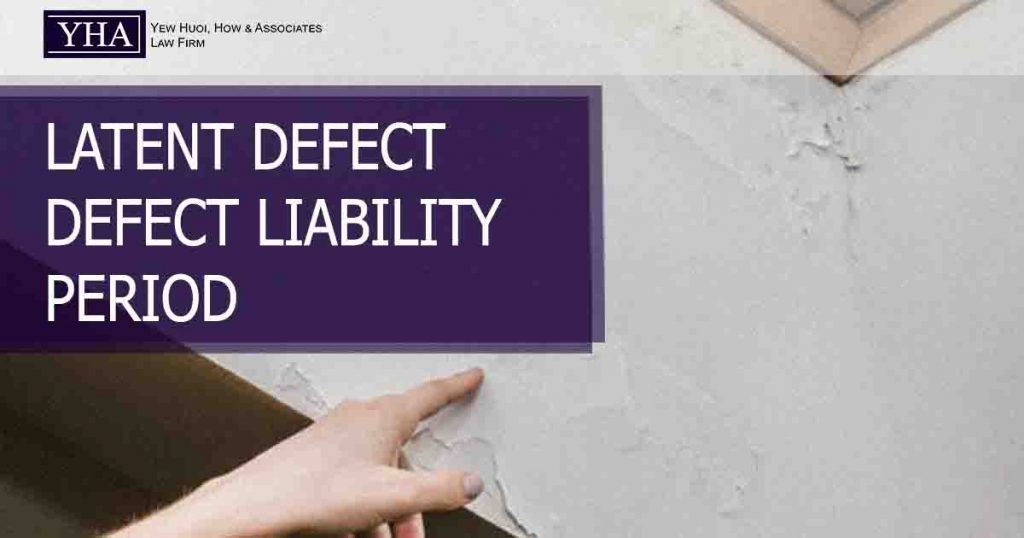In brief
Do you own a home or a business? If you answered yes, do you understand your rights as a property owner? Do you know what to do if you discover cracks in your property’s walls, ceilings, and so on one fine day, but the defect liability period stipulated in the statutory sale and purchase agreement has expired? You’re probably wondering if you’re still inside the time limit for filing a claim for your damaged property.
- Now, for the good news! The Limitation (Amendment) Act 2018 (“Amendment Act”), which just entered into force on September 1, 2019, has redefined the legislation on latent damages. This new law was established by Parliament to help many property buyers who may not identify flaws in their house until after many years have gone (up to a certain limit of course).
What is a latent defect?
In home complexes, this is a regular problem. The majority of property owners are lay people with limited technical knowledge and insufficient equipment to uncover or identify building defects. The majority of the time, they are only aware of the flaws after they are discovered during a routine examination. These flaws are referred to as latent (or concealed) flaws. They are the polar opposites of patent flaws, which are readily apparent. By the way, the DLP does not cover all new dwelling complexes. This warranty, according to the HDA, only applies to homes with residential titles. As a result, the DLP does not cover SoFo and SoVo devices with commercial titles.
The examples of typical latent defects are:
- Improper design problems – During the building design stage, inappropriate construction materials were specified. For example, where the space is directly exposed to adverse weather conditions, a cementitious waterproofing system was provided.
- Poor workmanship problems – Poor foundation bearing strength, which might lead to building settlement and, as a result, building cracks, owing to poor craftsmanship. During the piling operation, the contractor must assure correct craftsmanship.
- Construction material problems – Improper contractors’ “cost-cutting” activities or wrong manufacturers’ declarations might create construction material difficulties. To meet their responsibility at the lowest feasible cost, substandard supplies were provided. Tiles, for example, have been discovered fractured over time after being placed.
How long is the latent defect period?
The Amendment Act included a new Section 6A, which states that an action for negligence damages (not including personal injuries) must be filed within three years after the earliest date on which the plaintiff first possessed the information and right to initiate the case. This implies that a property owner can sue a developer for a flaw detected in his or her home within three years of the date the issue was first identified, even if the defect happened six years ago.
There is, however, a catch. No legal action can be initiated 15 years after the fault develops, according to Section 6A (3). This was to safeguard engineers and architects, according to Datuk Seri Razali Ibrahim, then-Deputy Minister in the Prime Minister’s Department, during the introduction of the amendment Bill in Parliament.
The newly included provision was also accompanied by examples that explained how it works to the general public. Two of the examples are very appropriate:
Section 6A illustration (2)
‘In the year 2000, C purchased a home from D. C noticed a crack in the walls in 2005, which severely harmed them. The cracks were discovered in 2002, two years after C moved into the property, according to a building study prepared by a consultant. From 2005, C has three years to launch a lawsuit in court against D for damages.’
Section 6A illustration (3)
‘In the year 2000, C purchased a home from D.C noticed a break in the walls in 2017, which caused significant damage. The cracks were discovered in 2001, one year after C moved into the property, according to a building report prepared by a consultant. C cannot file a lawsuit since the fifteen-year limitation period has passed him by.’
It is likely that the primary issue concerning the applicability of section 6A(2) will be when the plaintiff first possessed the knowledge necessary to initiate an action. To be clear, Section 6A(4)(b) requires a plaintiff to be reasonably alert in identifying a fault, whether by self-observation or with the assistance of an expert. As a result, this newly enacted law does not provide any protection to unaware property owners.
Conclusion
The Amendment Act is unquestionably a positive step forward. It resolves property owners’ complaints and sets a 15-year time limit for filing claims. It also compels property owners to take reasonable steps to detect hidden defects before the time limit for filing a lawsuit expires. Regardless of the DLP indicated in Sales and Purchase Agreements, this new clause applies.

